#NASA observations
Text
Close up of Pluto from the New Horizons space probe.
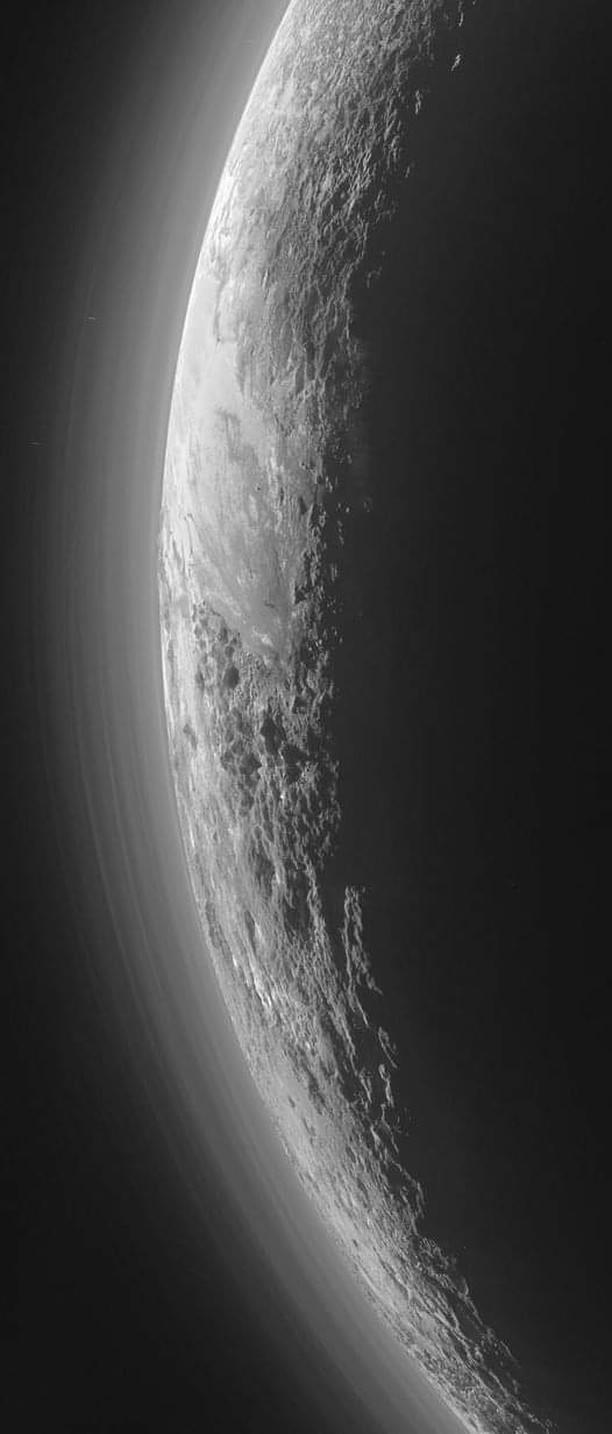
Will be adding several more photos to this same post
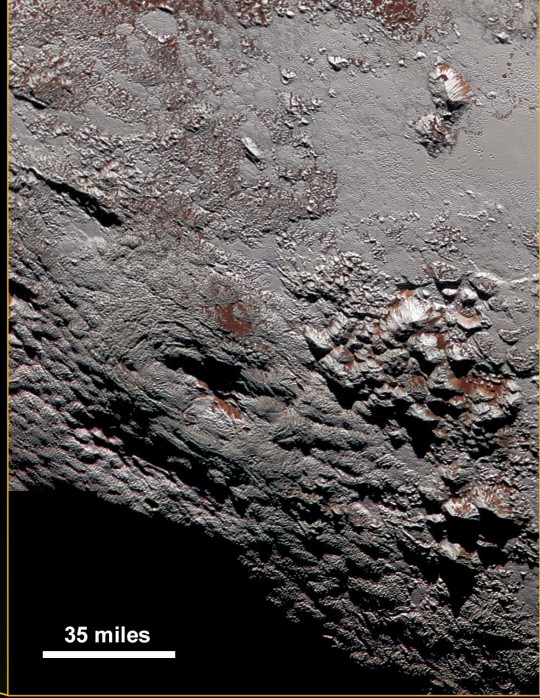


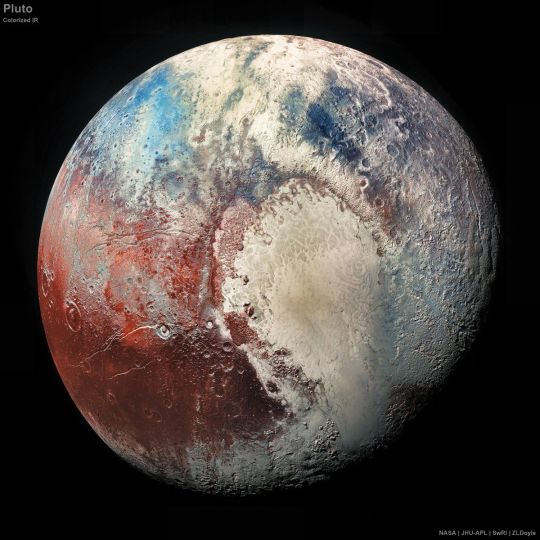

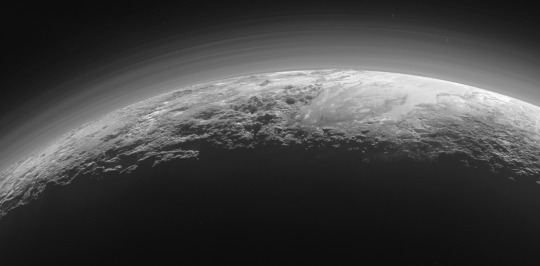

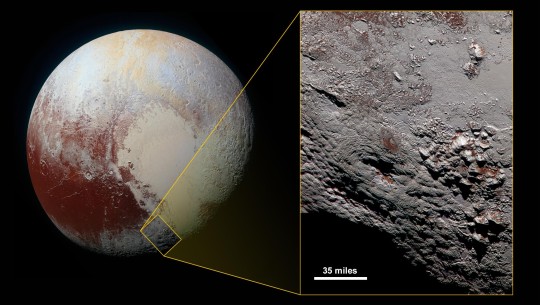
#astronomy#nasa#astronomers#universe#astrophotography#nasa photos#nasawebb#astrophysics#outer space#hubble space telescope#astrology#astronomy photography#astronomy picture of the day#astro observations#astro notes#astro community#astrography#our universe#nebula#pluto#planets#planet#nasa picture of the day#goddard space flight center#galaxies#galaxy#spacecraft#new horizons#space exploration#space
18K notes
·
View notes
Text
The most detailed view of Jupiter.
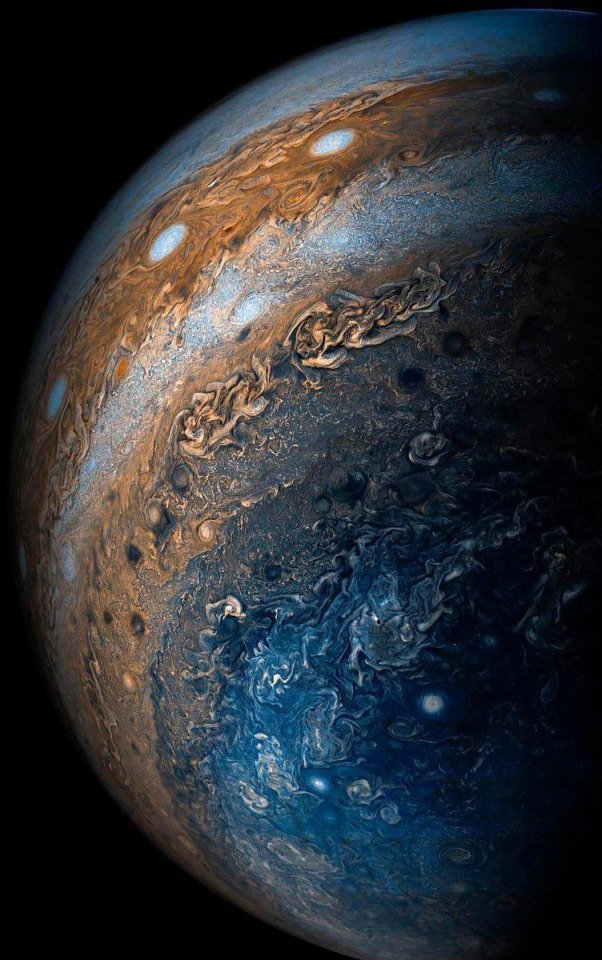
#jupiter#astronomy#space#astrophotography#universe#nasa#astro#galaxy#astronout#galaxies#astro notes#astro observations#astro community#nasa picture of the day#nasa photos#solar system#planets#planet
3K notes
·
View notes
Text

the anteroom of paradise
#artists on tumblr#photography#astrophotography#astrophysics#astronomy#astro observations#astro community#astronomical observation#astronomical objects#nebula#nasa#space photography#galaxies#space#outer space#science#cosmos#universe#cosmology
762 notes
·
View notes
Text
2024 Total Solar Eclipse 🌑
On April 8th, 2024, there will be a total solar eclipse visible in parts of Canada and the United States! Below is a map from planetary.org showing its path.
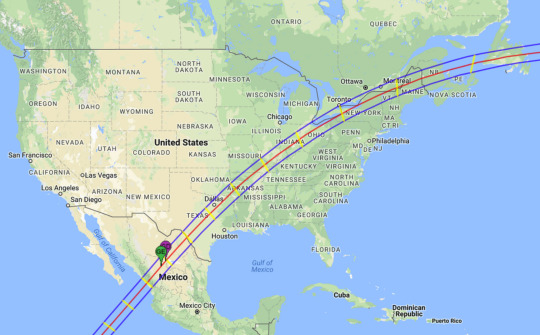


298 notes
·
View notes
Text
Saturday, October 21.
International Observe the Moon Night
Today on Tumblr is, this weekend of October 21, more Tonight on Tumblr, in truth. And that is for the simple reason that it is International Observe the Moon Night. Which, for the vast swathes of y'all in the #moon and #nasa fandom communities, will come as very welcome news.
What exactly is International Observe the Moon Night? Well, it's rather self-explanatory, and summarized by NASA thus:
"International Observe the Moon Night is a time to come together with fellow Moon enthusiasts and curious people worldwide. Everyone on Earth is invited to learn about lunar science and exploration, take part in celestial observations, and honor cultural and personal connections to the Moon. We encourage everyone to interpret “observe” broadly!
International Observe the Moon Night occurs annually in September or October, when the Moon is around first quarter―a great phase for evening observing. A first-quarter Moon offers excellent viewing opportunities along the terminator (the line between night and day), where shadows enhance the Moon’s cratered landscape."
Most interesting. You can find out more here.
Happy gazing x
#today on tumblr#nasa#moon#international observe the moon night#the moon#lunar#full moon#night sky#space photography#astronomy#nasa photos#outer space#space#space exploration
212 notes
·
View notes
Text

If we made the most straightforward estimate using today's best technology, we'd state there are 170 billion galaxies in our Universe. But we know more than that, and our modern estimate is even grander: two trillion galaxies.
📷: NASA, ESA, Hubble
#nasa#astronomy#astrophotography#solar system#astrophysics#hubble#physics#james webb images#james webb space technology#nebula#i love universe#my universe#observable universe#law of the universe#alternate universe#linked universe#steven universe#marvel cinematic universe
271 notes
·
View notes
Video
“ Time for some Sun salutations “ // © Nasa
Video description: Mellow music plays as compiled images taken every 108 seconds condenses 7 days of solar observations, between Nov. 1 and Nov. 8 into 23 seconds. The video shows bright active regions passing across the face of the Sun as it rotates.
Credit: nasagoddard, Scott Wiessinger (Lead Producer and editor), Tom Bridgman (Lead Visualizer), Lars Leonhard (Music)
#space#sun#Nasa#observation#SolarSystem#Galaxies#universe#spaceexploration#4K#8K#reels#explore#follow#discover
507 notes
·
View notes
Text
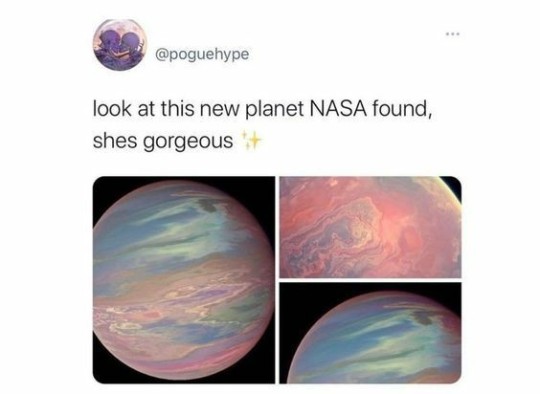
#space#space travel#space exploration#outer space#deep space#space and astronomy#astronaut#astrophotography#astrophysics#astrology#astronomia#astro observations#astronauts#astro notes#astronews#astronomers#astronomy#astronomy photography#pink#a e s t h e t i c#nature photography#photography#planets#nasa
54 notes
·
View notes
Text

Polaris
30 minutes exposure @ f/3.5
Pentax Spotmatic F
Super-Multi-Coated Takumar 28mm f/3.5
Ilford XP2 Super 400
Rodinal 1:25 (18mins)
Tumblr - Instagram
#star trails#35mm#analog#nasa#night photography#astronomy#astro observations#polaris#pentax#takumar#ilford#rodinal#film photography#black and white film#shooting star#noctografia#silhouette#lone tree#original photographers#photographers on tumblr#blu27nature
75 notes
·
View notes
Text
CAN WE HARNESS THE FULL ENERGY OF THE SUN??
Blog#343
Wednesday, October 25th, 2023
Welcome back,
Our civilization will need more power in the future. Count on it. The ways we use power today: for lighting, transportation, food distribution and even entertainment would have sounded hilarious and far fetched to our ancestors.
As our technology improves, our demand for power will increase. I have no idea what we'll use it for, but I guarantee we'll want it. Perhaps we'll clean up the oceans, reverse global warming, turn iron into gold, or any number of activities that take massive amounts of energy.
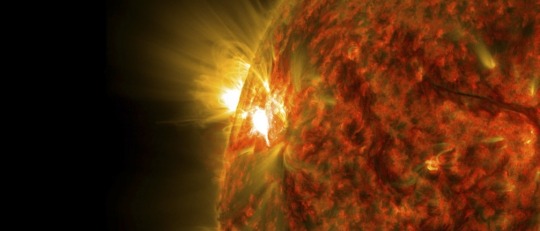
Fossil fuels won't deliver, and they come with some undesirable side effects. Nuclear fuels will only provide so much power until they run out.
We need the ultimate in energy resources. We'll want to harness the entire power of our star. The Soviet astronomer Nikolai Kardashev predicted that a future civilization might eventually harness the power of an entire planet. He called this a Type I civilization.

A Type II would harness the entire energy output of a star. And a Type III civilization would utilize the power of their entire galaxy. So let's consider a Type II civilization.
What would it actually take to harness 100% of the energy from a star? We'd need to construct a Dyson Sphere or Cloud and collect all the solar energy that emanates from it. But could we do better? Could we extract material directly from a star?
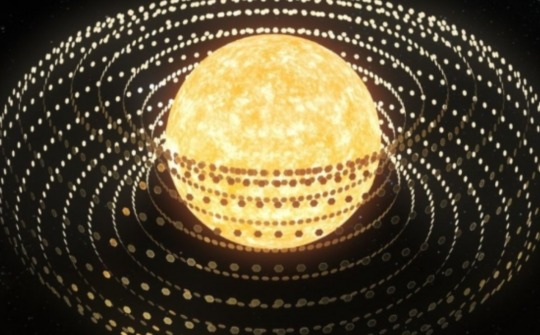
You bet, it's the future!
This is an idea known as "stellar lifting". Stealing hydrogen fuel from the Sun and using it for our futuristic energy needs. In fact, the Sun's already doing it… poorly. Stars generate powerful magnetic fields. They twist and turn across the surface of the star, and eject hydrogen into space. But it's just a trickle of material. To truly harness the power of the Sun, we need to get at that store of hydrogen, and speed up the extraction process.

There are a few techniques that might work. You can use lasers to heat up portions of the surface, and increase the volume of the solar wind. You could use powerful magnetic fields to carry plasma away from the Sun's poles into space.Which ever way it happens, once we've got all that hydrogen. How do we use it to get energy? We could combine it with oxygen and release energy via combustion, or we could use it in our space reactors and generate power from fusion.
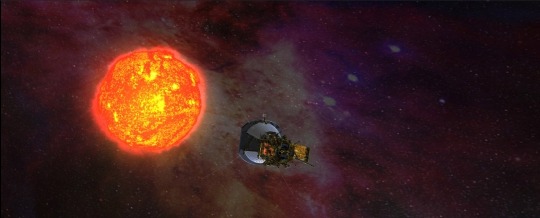
But the most efficient way is to feed it to a black hole and extract its angular momentum. A highly advanced civilization could siphon material directly from a star and send it onto the ergosphere of a rapidly spinning pet black hole.
Here's Dr. Mark Morris, a Professor of Astronomy at UCLA. He'll explain:
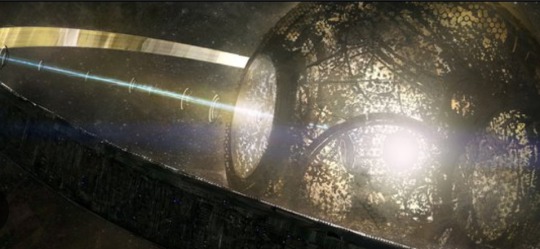
"There is this region, called the ergosphere between the event horizon and another boundary, outside. The ergosphere is a very interesting region outside the event horizon in which a variety of interesting effects can occur. For example, if we had a black hole at our disposal, we could extract energy from spinning black holes by throwing things into the ergosphere and grabbing whatever comes out at even higher speeds."
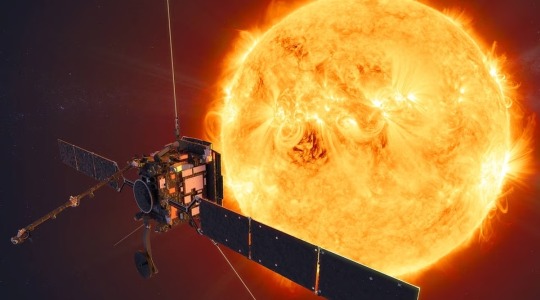
This is known as the Penrose process, first identified by Roger Penrose in 1969. It's theoretically possible to retrieve 29% of the energy in a rotating black hole. Unfortunately, you also slow it down. Eventually the black hole stops spinning, and you can't get any more energy out of it. But then it might also be possible to extract energy from Hawking radiation; the slow evaporation of black holes over eons. Of course, it's tricky business.
Originally published on phys.org
COMING UP!!
(Saturday, October 28th, 2023)
"HOW DID THE UNIVERSE ELEMENT FORM??"
#astronomy#outer space#alternate universe#astrophysics#universe#spacecraft#white universe#space#parallel universe#astrophotography#sunspots#sunrise#nasa#earth science#earth#astroworld#astro observations
67 notes
·
View notes
Text
Can someone tell me why I never learned about the five classified dwarf planets in our galaxy? Well of course minus Pluto (but when I was in school that was an actual planet)
But like why don’t we learn about Ceres, Haumea, Makemake, and Eris?
#witchblr#witchcraft#witch#baby witch#nature#witch community#magick#astro placements#astrology#astronomy#planets#the world#life#school#learning#astronaut#nasa#astro notes#astro observations#astro community#pluto
96 notes
·
View notes
Text



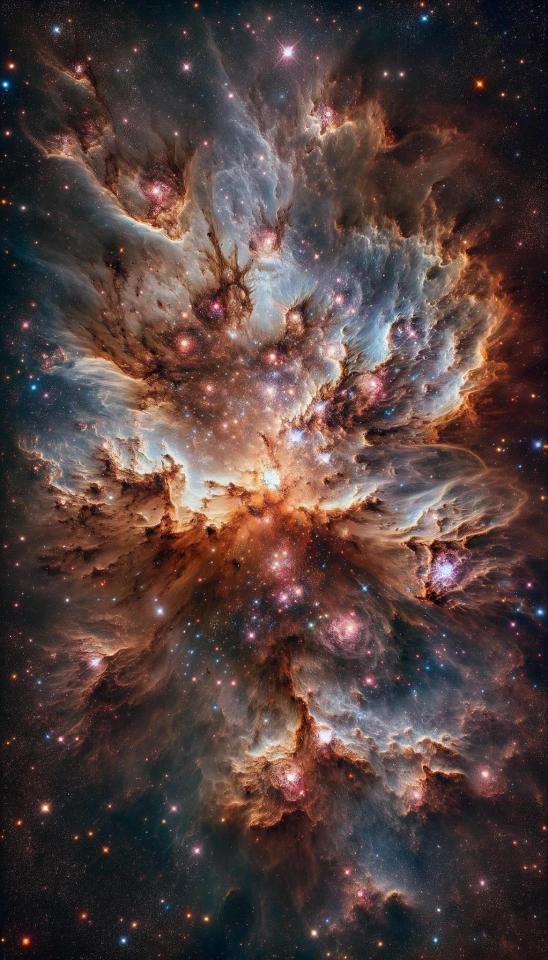
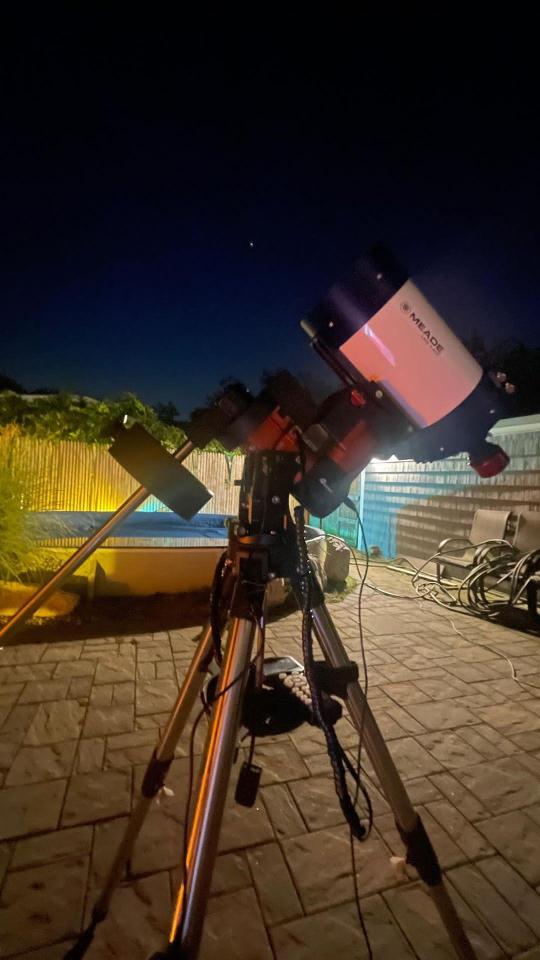
Think we're the only planet with life? 350mp quality. Remember to download to your phone and zoom in. Gets even more beautiful. Yes this is a nebula, yes I know there’s no life in a nebula. Of course these are not real photos. Duh!
#astronomers#astrophysics#astrophotography#astronomy#space station#hubble space telescope#james webb images#james webb#nasawebb#nasa#space photography#universe#astrology#astro observations#astro notes#asterion#telescope#james webb space telescope#mars planet#jupiter planet#saturn planet#planet#planets#space science#space#outer space#james webb space technology#space exploration#jet propulsion#i love astronomy
11K notes
·
View notes
Text
Pluto, 3.7 billion miles away from the Sun.

#astronomy#space#pluto#astrophotography#universe#nasa#astro#galaxy#astronout#galaxies#astro notes#planets#planet#solar system#astro community#astro observations#nasa picture of the day#nasa photos#nasawebb
799 notes
·
View notes
Text
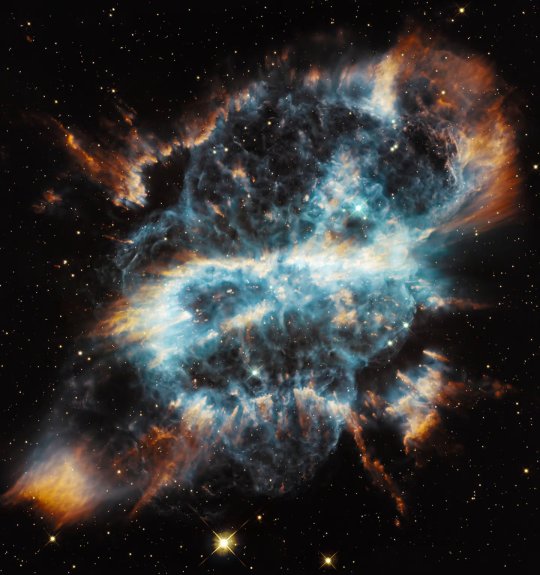
Nebula NGC 5189
Credit: Hubble
#nebula#hubble telescope#photography#astrology observations#photographers on tumblr#galaxy#universe#nasa#nasa jpl#discovery#love
57 notes
·
View notes
Text
2024 March 18
A comet is pictured with a really long and wavy ion tail. The front of the comet -- its coma -- appears to be a spiral. The coma is green, the tail is faint blue, and part of the swirl is red.
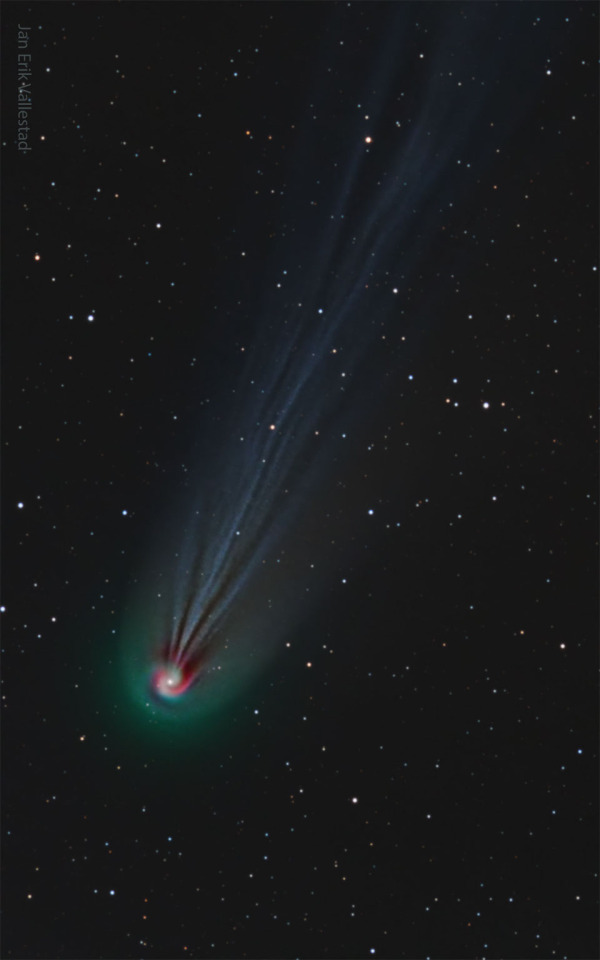
Comet Pons-Brooks' Swirling Coma
Image Credit & Copyright: Jan Erik Vallestad
Explanation: A bright comet will be visible during next month's total solar eclipse. This very unusual coincidence occurs because Comet 12P/Pons-Brooks's return to the inner Solar System places it by chance only 25 degrees away from the Sun during Earth's April 8 total solar eclipse. Currently the comet is just on the edge of visibility to the unaided eye, best visible with binoculars in the early evening sky toward the constellation of the Fish (Pisces). Comet Pons-Brooks, though, is putting on quite a show for deep camera images even now. The featured image is a composite of three very specific colors, showing the comet's ever-changing ion tail in light blue, its outer coma in green, and highlights some red-glowing gas around the coma in a spiral. The spiral is thought to be caused by gas being expelled by the slowly rotating nucleus of the giant iceberg comet. Although it is always difficult to predict the future brightness of comets, Comet Pons-Brook has been particularly prone to outbursts, making it even more difficult to predict how bright it will actually be as the Moon moves in front of the Sun on April 8.
#astronaut#astronomers#not astrology#star#stars#art#astronomy#outer space#space#artist#comet#NASA#astrophysics#astro observations#red#blue#green#meteor#ion blue#red gas#green outer layer
22 notes
·
View notes
Text



guys this is not a joke marwa literally thinks nandor and guillermo are exes and that's why nandor keeps thinking about guillermo during sex. she thinks he's adjusting to having a new partner after guillermo. and she's supportive of it?? she thinks nandor still has feelings for guillermo and she's understanding of that???? I literally cant wait for the meg conversation 2.0 where she sits nandor down and tells him that he's clearly in love with guillermo and he should be focusing on his REAL true love before it's too late
#i can see it coming a mile away its gonna happen#they made marwa incredibly intelligent for a reason shes clearly observant#she can tell nandor and guillermo have smth going on and shes ok with that. again these two are not built to last#marwa needs to find her own purpose and ditch nandor frankly#just tell him he needs to be with guillermo and goes off to work at nasa or whatever#wwdits#wwdits spoilers#nandermo
748 notes
·
View notes